Croatian start-up Verne wants its svelte robo-cabs to reshape urban travel
Can the creators of Rimac’s electric hypercar transform urban mobility with Verne, their new autonomous start-up?
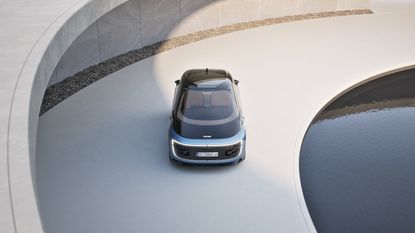
Automotive autonomy remains an unknown quantity. Despite gung-ho early predictions about the inevitability and ubiquity of self-driving technology, the legal, philosophical and, above all, technical barriers to widespread adoption remain stubbornly in place.
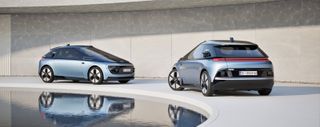
The Verne vehicle is a two-seater autonomous cab
Verne is a new company that proudly bills itself as an 'innovative concept of urban autonomous mobility'. Co-founded by Croatian engineer and entrepreneur Mate Rimac, Verne will launch as a complete eco-system of vehicle, app and service, beginning in Zagreb in 2026.
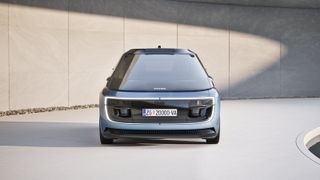
Rimac is best known for his eponymous electric hypercar company, and for Verne – named after the French pioneer of science fiction – he has joined forces with two Rimac Group colleagues, Marko Pejković, now CEO of Verne, and new chief design officer Adriano Mudri, the designer of the Rimac Nevera hypercar.
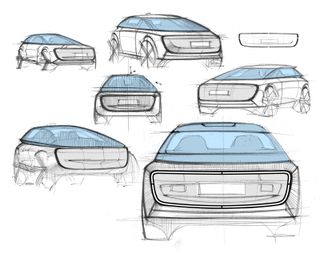
Sketches of the Verne autonomous vehicle
The Nevera is one of the fastest electric cars ever made, but Verne's service will run at a rather more leisurely pace. The public face of the service is a new fully autonomous electric vehicle, a compact two-seater with a spacious interior that makes the most of the absence of driver, dashboard, and steering wheel.
A driverless future: inside Verne’s autonomous taxi
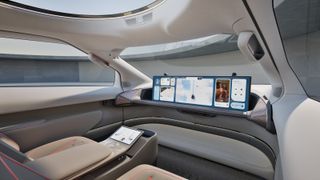
The interior of Verne's autonomous taxi
'The data shows that nine out of ten rides are used by one or two people. Therefore, we can satisfy most of all trips with a two-seater and create unmatched interior space in a compact-sized vehicle,' says Mudri. 'More space than a Rolls-Royce to relax and spend your time well. We wanted to make the interior less automotive and more like a living room [with] an ultra-wide 43-inch display that you can use. This is for entertainment but also to get information about the journey during the ride.'

The interior of the Verne vehicle
Fixtures and fittings will be luxurious but hardwearing – think business class – with a touchpad for controlling the environment and a key physical switch, the 'Median', which will start and stop your pre-booked trip. All this is set beneath a round sunroof that the company calls the Halo ring.
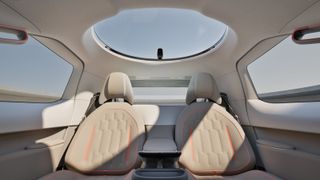
The interior of the Verne autonomous vehicle with the halo roof
The two-seat, driverless interior gives the compact vehicle a distinctive silhouette, with a long canopy-like windscreen that reaches almost to the front bumper. This inside-out design approach creates something the Verne team describe as 'spaceship-like', a look emphasised by the absence of conventional accessories like windscreen wipers and mirrors. 'This makes the aerodynamic performance more efficient and allows for easier cleaning,' says Mudri, who adds that a trunk is kept as it'll tie in with the projected use cases.
Wallpaper* Newsletter
Receive our daily digest of inspiration, escapism and design stories from around the world direct to your inbox.

Scale is the key to making Verne work
The core of the service is an app that not only allows customers to hail a ride, but also to personalise the incoming vehicle to their tastes in 'comfort, lighting, temperature and even scent'. In short, Verne is an upscale driverless taxi service, a blend of Uber and Zipcar with a mature, self-driving technology.

The Verne App will shape your experience of the journey
It's the latter that'll make or break the idea. Verne is partnering with autonomous specialist Mobileye, with its Mobileye Drive platform. The vehicle will be outfitted with a substantial sensor set (cameras, radar and lidar) to help it navigate local traffic, changes in weather conditions and the countless other factors that'll come into play to make the system a success.

The app allows users to personalise every facet of the vehicle
To make all this happen, not only is the city of Zagreb a willing partner, but fresh physical infrastructure will be required. Each city will have its own 'Mothership', a fancy name for a depot that'll charge, clean and service each machine ready for its daily shift. The next countries on Verne's roll-out roadmap are the UK and Germany, as well as the Middle East.
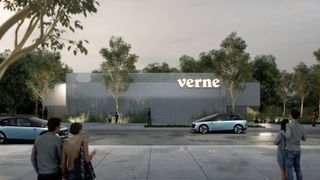
The proposed Verne Mothership
'The end result would be the best possible mobility experience for everyone,' says Mate Rimac. 'This means that every customer will have a better service than the best mobility service enjoyed by the very rich, through a service that is affordable for all.'
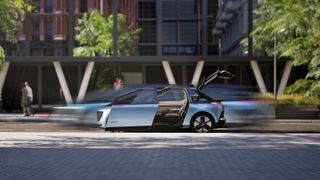
Verne, a new mobility concept
Rimac, who founded Rimac Automobili in 2011, has seen his modest company rise to a position of technical superiority in the EV industry. With the hypercar division now known as Bugatti Rimac, the Rimac Group also has divisions working with BMW and Porsche. Although pure automotive passion was the original catalyst for the company, Verne is a very different proposition, combing EV and autonomy in a pioneering way that has been much theorised but not yet put into practice.
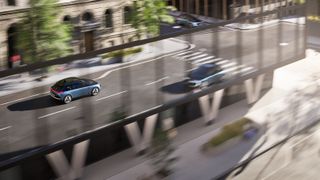
Verne will debut in Zagreb, Croatia, in 2026
'We are shifting the attention from the technology itself to its benefits,' says Rimac. 'Verne will transform travel time into a chance for personal growth, discovery, and enjoyment. In essence, enriching lives in every journey you take.'
Find out more at LetsVerne.com
Jonathan Bell has written for Wallpaper* magazine since 1999, covering everything from architecture and transport design to books, tech and graphic design. He is now the magazine’s Transport and Technology Editor. Jonathan has written and edited 15 books, including Concept Car Design, 21st Century House, and The New Modern House. He is also the host of Wallpaper’s first podcast.
-
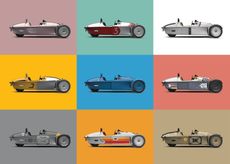 Morgan announces nine limited editions of its Super 3 three-wheeler
Morgan announces nine limited editions of its Super 3 three-wheelerThe Super 3 Origins Collection assembles nine elaborate design specifications for the diminutive Morgan Super 3, drawing on the influences and inspirations that shaped this high-performance three-wheeler
By Jonathan Bell Published
-
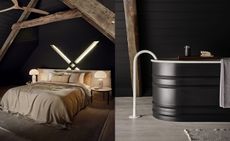 Vipp’s new guesthouse in Latvia’s Salaca National Park is its cosiest to date
Vipp’s new guesthouse in Latvia’s Salaca National Park is its cosiest to dateDanish design brand Vipp transforms a 19th-century Latvian riverside log cabin into its ninth guesthouse
By Sofia de la Cruz Published
-
 Step inside Le Harlequin, an imaginative redesign of a Mumbai apartment
Step inside Le Harlequin, an imaginative redesign of a Mumbai apartmentLe Harlequin by Design Hex is an imaginative redesign of a Mumbai apartment in the bustling Indian city's Lower Parel neighbourhood
By Daven Wu Published
-
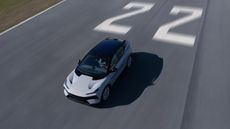 Can Lotus' mighty flagship SUV live up to the hype? We try out the Lotus Eletre R for size
Can Lotus' mighty flagship SUV live up to the hype? We try out the Lotus Eletre R for sizeIs day-to-day life with a 905hp electric SUV a delight or a disappointment? A fortnight with a Lotus Eletre R provides the answers
By Jonathan Bell Published
-
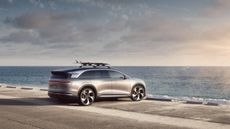 With the Lucid Air and now the Lucid Gravity, the Californian EV maker is redefining luxury
With the Lucid Air and now the Lucid Gravity, the Californian EV maker is redefining luxuryAs the Lucid Gravity debuts, Derek Jenkins, Lucid Motors’ SVP of Brand and Design, discusses the EV company's approach to shaping high-end, high-performance electric cars
By Jonathan Bell Published
-
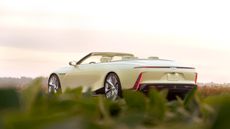 Cadillac SOLLEI Concept journeys on to the higher reaches of the auto market
Cadillac SOLLEI Concept journeys on to the higher reaches of the auto marketCadillac describes its all-electric four-seater convertible concept as an ‘ode to the sun’ as it moves even further upmarket
By Jonathan Bell Published
-
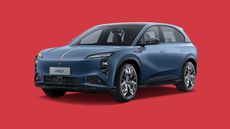 Hongqi’s Giles Taylor on the Chinese car maker's imminent arrival in the UK
Hongqi’s Giles Taylor on the Chinese car maker's imminent arrival in the UKHongqi makes China's state limousines. By 2026, it'll have a pair of premium EVs on UK roads. Giles Taylor, its VP of design, tells us about its design approach, and ambition in Europe
By Aysar Ghassan Published
-
 We sample the world’s first all-electric DeLorean, a stainless steel marvel for the modern age
We sample the world’s first all-electric DeLorean, a stainless steel marvel for the modern ageElectrogenic brings its brilliance with batteries and motors to bear on the iconic DeLorean DMC-12, giving this classic design the futuristic feel it deserves
By Jonathan Bell Published
-
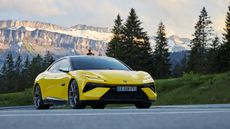 The pure electric Lotus Emeya GT looks and drives like a modern Lotus should
The pure electric Lotus Emeya GT looks and drives like a modern Lotus shouldLotus finds its groove with the elegant Emeya, a true 21st-century grand tourer
By Guy Bird Published
-
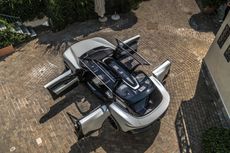 Paolo Dellachà, CEO of Automobili Pininfarina, takes us through the hypercar company’s plans
Paolo Dellachà, CEO of Automobili Pininfarina, takes us through the hypercar company’s plansAutomobili Pininfarina produces a select portfolio of one-of-a-kind hypercars. Next up, a ‘Luxury Utility Vehicle’. CEO Paolo Dellachà takes us into the future
By Jonathan Bell Published
-
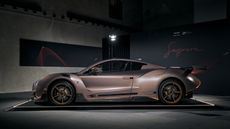 The Hispano Suiza Carmen Sagrera is an esoteric Spanish hypercar
The Hispano Suiza Carmen Sagrera is an esoteric Spanish hypercarThe reborn Spanish car brand continues to forge a unique path with the striking all-electric Carmen Sagrera, a celebration of 120 years of the Hispano Suiza name
By Jonathan Bell Published